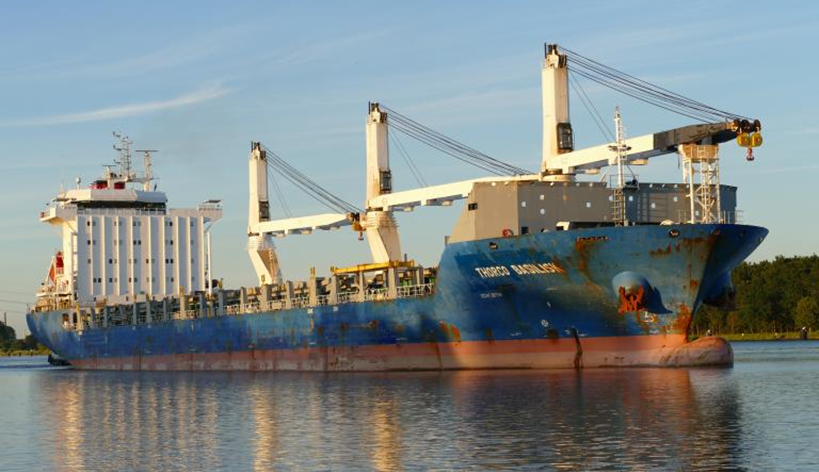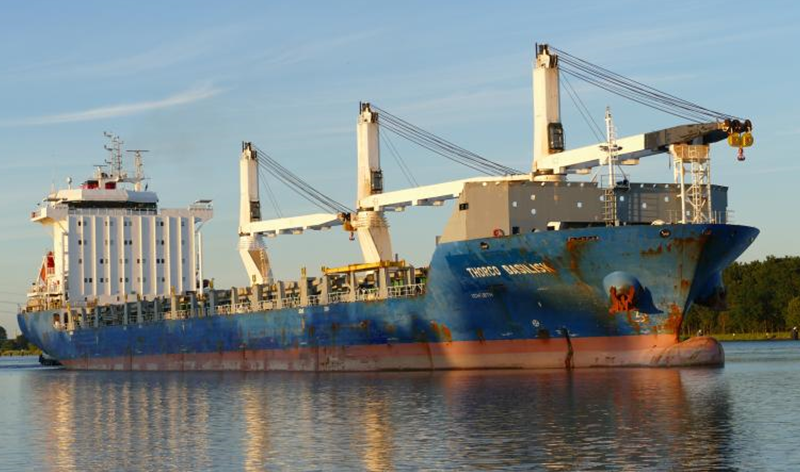(WASHINGTON) — Undetected corrosion and wear led to an equipment failure on a bulk carrier while offloading cargo last year in Houston, the National Transportation Safety Board (NTSB) said Tuesday.
On July 23, 2022, the cargo ship Thorco Basilisk was offloading a wind turbine component at the Greensport Terminal on the Houston Ship Channel when the hoisting wire rope on one of the ship’s cargo cranes failed, causing the component to drop onto the vessel’s cargo hold tween deck.

No injuries were reported. Damage to the ship and cargo was estimated between $3 million and $5 million.
An examination of the hoisting wire rope showed significant external corrosion and wear. However, the visible signs of external corrosion could not be fully seen until the grease on the rope was removed. While annual surveys were performed on the wire ropes, the surveys primarily involved visual inspections to look for wear and would not have identified the underlying corrosion below the grease.
While the hoisting wire rope had been in use for nine years, still within the standard 10-year period of use, a post-casualty examination found “the wire rope was near the end of its service life and probably should have been discarded.” The operating company has since updated its planned maintenance system to require crane wire rope replacement every five years.

“Salt water and humid ocean air cause corrosion of metals, presenting challenges for the maintenance of high-strength steel wire ropes on vessels,” the NTSB report said. “A deteriorated wire rope directly affects a crane’s ability to safely and reliably handle loads up to its rated capacity (safe working load). Therefore, diligent inspection, maintenance and management of wire ropes are essential. Working wires should be changed at recommended intervals, or more frequently, depending on operating conditions and use.”
Click here to read the full report.
– National Transportation Safety Board

